 W
WThe barbarian kingdoms were kingdoms founded by various Germanic, Iranian, Hunnic and other peoples, that were established all over the Mediterranean after the Barbarian Invasions from the late antiquity to the early middle ages. The term "barbarian" has been commonly used by historians. Other terms used include "Northern European kingdoms", "Romano-northern European kingdoms", and "post-Roman kingdoms".
 W
WAlamannia or Alemannia was the territory inhabited by the Germanic Alemanni peoples after they broke through the Roman limes in 213. The Alemanni expanded from the Main River basin during the 3rd century, raiding Roman provinces and settling on the left bank of the Rhine River beginning in the 4th century.
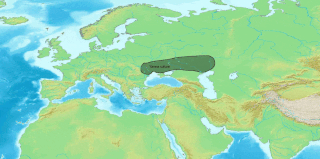 W
WThe Alans were an ancient and medieval Iranian nomadic pastoral people of the North Caucasus – generally regarded as part of the Sarmatians, and possibly related to the Massagetae. Modern historians have connected the Alans with the Central Asian Yancai of Chinese sources and with the Aorsi of Roman sources. Having migrated westwards and become dominant among the Sarmatians on the Pontic–Caspian steppe, the Alans are mentioned by Roman sources in the 1st century CE. At that time they had settled the region north of the Black Sea and frequently raided the Parthian Empire and the Caucasian provinces of the Roman Empire. From 215–250 CE the Goths broke their power on the Pontic Steppe.
 W
WThe Antes, or Antae, were an early East Slavic tribal polity of the 6th century CE. They lived on the lower Danube River, in the northwestern Black Sea region, and in the regions around the Don River. Scholars commonly associate the Antes with the archaeological Penkovka culture.
 W
WThe Pannonian Avars were an alliance of several groups of Eurasian nomads of unknown origins.
 W
WGwened, Bro-Gwened or Vannetais is a historic realm and county of Brittany in France. It is considered part of Lower Brittany.
 W
WCarantania, also known as Carentania, was a Slavic principality that emerged in the second half of the 7th century, in the territory of present-day southern Austria and north-eastern Slovenia. It was the predecessor of the March of Carinthia, created within the Carolingian Empire in 889.
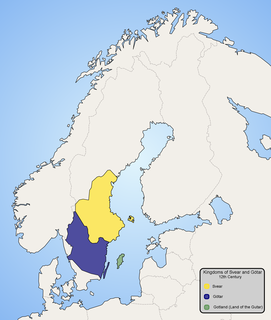 W
WThe consolidation of Sweden involved an extensive process during which the loosely organized social system consolidated under the power of the king. The actual age of the Swedish kingdom is unknown. Also, for various reasons, scholars differ in defining early Sweden as either a country, state or kingdom.
 W
WCornouaille is a historical region on the west coast of Brittany in West France. The name is cognate with Cornwall in neighbouring Great Britain. This can be explained by the settlement of Cornouaille by migrant princes from Cornwall who created an independent principality founded by Rivelen Mor Marthou, and the founding of the Bishopric of Cornouaille by ancient saints from Cornwall. Celtic Britons and the settlers in Brittany spoke a common language, this language would evolve into Breton, Welsh and Cornish.
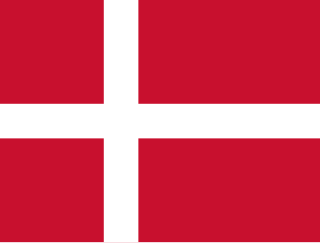 W
WDenmark is a Nordic country in Northern Europe. European Denmark, which is the southernmost of the Scandinavian countries, consists of a peninsula, Jutland, and an archipelago of 443 named islands, with the largest being Zealand, Funen and the North Jutlandic Island. The islands are characterised by flat, arable land and sandy coasts, low elevation and a temperate climate. Denmark lies southwest of Sweden and south of Norway, and is bordered to the south by Germany. The Kingdom of Denmark is constitutionally a unitary state comprising metropolitan Denmark and the two autonomous territories in the North Atlantic Ocean: the Faroe Islands and Greenland. Denmark has a total area of 42,943 km2 (16,580 sq mi) as of 2020,. Metropolitan Denmark has a population of 5.85 million, of which 800,000 live in the capital and largest city Copenhagen.
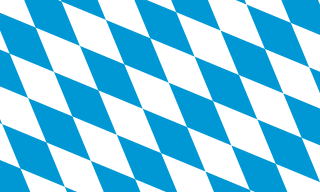 W
WThe Duchy of Bavaria was a frontier region in the southeastern part of the Merovingian kingdom from the sixth through the eighth century. It was settled by Bavarian tribes and ruled by dukes (duces) under Frankish overlordship. A new duchy was created from this area during the decline of the Carolingian Empire in the late ninth century. It became one of the stem duchies of the East Frankish realm which evolved as the Kingdom of Germany and the Holy Roman Empire.
 W
WDumnonia is the Latinised name for a Brythonic kingdom that existed in Sub-Roman Britain between the late 4th and late 8th centuries CE in the more westerly parts of present-day South West England. It was centred in the area of modern Devon, but also included modern Cornwall and part of Somerset, with its eastern boundary changing over time as the gradual westward expansion of the neighbouring Anglo-Saxon kingdom of Wessex encroached on its territory. The spelling Damnonia is sometimes encountered, but that spelling is also used for the land of the Damnonii, later part of the Kingdom of Strathclyde, in present-day southern Scotland. The form Domnonia also occurs and shares a linguistic relationship with the Breton region of Domnonée.
 W
WFrancia, also called the Kingdom of the Franks, Frankish Kingdom, Frankland, or Frankish Empire, was the largest post-Roman barbarian kingdom in Western Europe. It was ruled by the Franks during Late Antiquity and the Early Middle Ages. After the Treaty of Verdun in 843, West Francia became the predecessor of France, and East Francia became that of Germany. Francia was among the last surviving Germanic kingdoms from the Migration Period era before its partition in 843.
 W
WThe Frisian Kingdom, also known as Magna Frisia, is a modern name for the post-Roman Frisian realm in Western Europe in the period when it was at its largest (650–734). This dominion was ruled by kings and emerged in the mid-7th century and probably ended with the Battle of the Boarn in 734 when the Frisians were defeated by the Frankish Empire. It lay mainly in what is now the Netherlands and – according to some 19th century authors – extended from the Zwin near Bruges in Belgium to the Weser in Germany. The center of power was the city of Utrecht.
 W
WThe Gepids were an East Germanic tribe who lived in the area of modern Romania, Hungary and Serbia, roughly between the Tisza, Sava and Carpathian mountains. They were said to share the religion and language of the Goths and Vandals.
 W
WThe Ghassanids, also called the Jafnids, were an Arab tribe which founded a kingdom. They emigrated from Yemen in the early 3rd century to the Levant region. Some merged with Hellenized Christian communities, converting to Christianity in the first few centuries AD, while others may have already been Christians before emigrating north to escape religious persecution.
 W
WYr Hen Ogledd, in English the Old North, is the historical region of Northern England and the southern Scottish Lowlands inhabited by the Celtic Britons of sub-Roman Britain in the Early Middle Ages. Its population spoke a variety of the Brittonic language known as Cumbric. The Hen Ogledd was distinct from the parts of North Britain inhabited by the Picts, Anglo-Saxons, and Scoti as well as from Wales, although the people of the Hen Ogledd were the same Brittonic stock as the Picts, Welsh, Bretons and Cornish, and the region loomed large in Welsh literature and tradition for centuries after its kingdoms had disappeared.
 W
WThe Heptarchy is a collective name applied to the seven kingdoms of Anglo-Saxon England from the Anglo-Saxon settlement of Britain in the 5th century until the 8th century consolidation into the four kingdoms of Mercia, Northumbria, Wessex and East Anglia.
 W
WThe Heruli were an early Germanic people. Possibly originating in Scandinavia, the Heruli are first mentioned by Roman authors as one of several "Scythian" groups raiding Roman provinces in the Balkans and the Aegean Sea, attacking by land, and notably also by sea. During this time they reportedly lived near the Sea of Azov.
 W
WThe early medieval history of Ireland, often called Early Christian Ireland, spans the 5th to 8th centuries, from the gradual emergence out of the protohistoric period to the beginning of the Viking Age. The period notably includes the Hiberno-Scottish mission of Christianised Ireland to regions of pagan Great Britain and the spread of Irish cultural influence to Continental Europe.
 W
WThe Huns were a nomadic people who lived in Central Asia, the Caucasus, and Eastern Europe between the 4th and 6th century AD. According to European tradition, they were first reported living east of the Volga River, in an area that was part of Scythia at the time; the Huns' arrival is associated with the migration westward of an Iranian people, the Alans. By 370 AD, the Huns had arrived on the Volga, and by 430 the Huns had established a vast, if short-lived, dominion in Europe, conquering the Goths and many other Germanic peoples living outside of Roman borders, and causing many others to flee into Roman territory. The Huns, especially under their King Attila, made frequent and devastating raids into the Eastern Roman Empire. In 451, the Huns invaded the Western Roman province of Gaul, where they fought a combined army of Romans and Visigoths at the Battle of the Catalaunian Fields, and in 452 they invaded Italy. After Attila's death in 453, the Huns ceased to be a major threat to Rome and lost much of their empire following the Battle of Nedao (454?). Descendants of the Huns, or successors with similar names, are recorded by neighbouring populations to the south, east, and west as having occupied parts of Eastern Europe and Central Asia from about the 4th to 6th centuries. Variants of the Hun name are recorded in the Caucasus until the early 8th century.
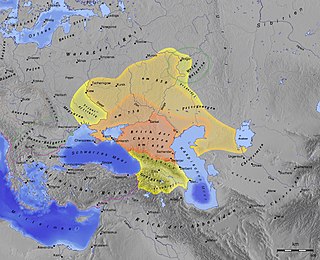 W
WThe Khazars were a semi-nomadic Turkic people that in the late 6th century CE established a major commercial empire covering the southeastern section of modern European Russia, southern Ukraine, Crimea and Kazakhstan. They created what for its duration was the most powerful polity to emerge from the break-up of the Western Turkic Khaganate. Astride a major artery of commerce between Eastern Europe and Southwestern Asia, Khazaria became one of the foremost trading empires of the early medieval world, commanding the western marches of the Silk Road and playing a key commercial role as a crossroad between China, the Middle East and Kievan Rus'. For some three centuries the Khazars dominated the vast area extending from the Volga-Don steppes to the eastern Crimea and the northern Caucasus.
 W
WGeatish kings, ruling over the provinces of Götaland (Gautland/Geatland), appear in several sources for early Swedish history. Today, most of them are not considered historical.
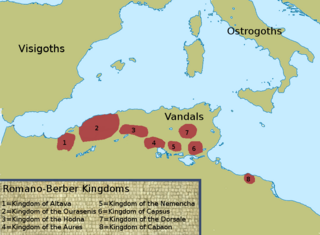 W
WThe Kingdom of Altava was an independent Berber kingdom centered on the city of Altava in present-day northern Algeria. The Kingdom of Altava was a successor state of the previous Mauro-Roman Kingdom which had controlled much of the ancient Roman province of Mauretania Caesariensis and during the reign of Kusaila extended from Volubilis in the west to the Aurès and later Kairaouan and the interior of Ifriqiya in the east. This Kingdom collapsed following Eastern Roman military campaigns to decrease its influence and power after Garmul invaded the Exarchate of Africa.
 W
WThe kingdom of Ouarsenis was an independent Berber kingdom located in the Ouarsenis region in the north of present-day Algeria.
 W
WThe Kingdom of the Aurès was an independent Christian Berber kingdom primarily located in the Aurès Mountains of present-day north-eastern Algeria. Established in the 480s by King Masties following a series of Berber revolts against the Vandalic Kingdom, which had conquered the Roman province of Africa in 435 AD, Aurès would last as an independent realm until the Muslim conquest of the Maghreb in 703 AD when its last monarch, Queen Dihya, was slain in battle.
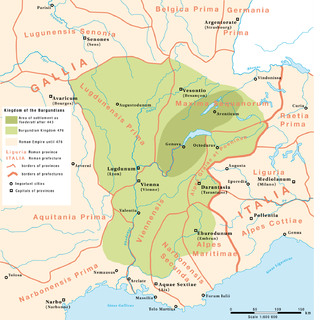 W
WThe Kingdom of the Burgundians or First Kingdom of Burgundy was established by Germanic Burgundians in the Rhineland and then in Savoy in the 5th century.
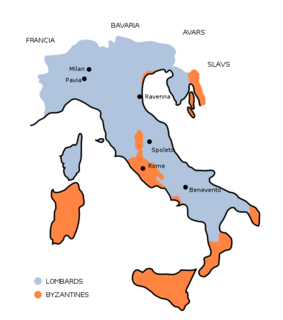 W
WThe Kingdom of the Lombards also known as the Lombard Kingdom; later the Kingdom of (all) Italy, was an early medieval state established by the Lombards, a Germanic people, on the Italian Peninsula in the latter part of the 6th century. The king was traditionally elected by the very highest-ranking aristocrats, the dukes, as several attempts to establish a hereditary dynasty failed. The kingdom was subdivided into a varying number of duchies, ruled by semi-autonomous dukes, which were in turn subdivided into gastaldates at the municipal level. The capital of the kingdom and the center of its political life was Pavia in the modern northern Italian region of Lombardy.
 W
WThe Kingdom of the Suebi, also called the Kingdom of Gallæcia or Suebi Kingdom of Gallæcia, was a Germanic post-Roman kingdom that was one of the first to separate from the Roman Empire. Based in the former Roman provinces of Gallaecia and northern Lusitania, the de facto kingdom was established by the Suebi about 409, and during the 6th century it became a formally declared kingdom identifying with Gallaecia. It maintained its independence until 585, when it was annexed by the Visigoths, and was turned into the sixth province of the Visigothic Kingdom in Hispania.
 W
WThe Lakhmids referred to in Arabic as al-Manādhirah (المناذرة) or Banu Lakhm was an Arab kingdom in Southern Iraq and Eastern Arabia, with al-Hirah as their capital, from about 300 to 602 AD. They were generally but intermittently the allies and clients of the Sassanian Empire, and participant in the Roman–Persian Wars. While the term "Lakhmids" has also been applied to the ruling dynasty, more recent scholarship prefers to refer to the latter as the Naṣrids.
 W
WThe Mauro-Roman Kingdom was an independent Christian Berber kingdom centred in the capital city of Altava which controlled much of the ancient Roman province of Mauretania Caesariensis. The kingdom was first formed in the fifth century as Roman control over the province weakened and Imperial resources had to be concentrated elsewhere, notably in defending the Italian Peninsula itself from invading Germanic tribes.
 W
WOld Great Bulgaria or Great Bulgaria, also often known by the Latin names Magna Bulgaria and Patria Onoguria, was a 7th-century Nomadic empire formed by the Onogur Bulgars on the western Pontic–Caspian steppe. Great Bulgaria was originally centered between the Dniester and lower Volga.
 W
WOld Saxony is the original homeland of the Saxons. It corresponds roughly to the modern German states of Lower Saxony, Westphalia, Nordalbingia and western Saxony-Anhalt, which all lie in northwestern Germany. It should not be confused with the modern German state of Saxony, which is in eastern Germany, adjoining the northwest border of the Czech Republic.
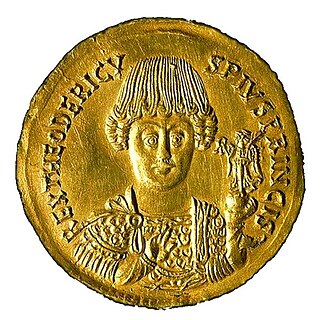 W
WThe Ostrogothic Kingdom, officially the Kingdom of Italy, was established by the Germanic Ostrogoths in Italy and neighboring areas from 493 to 553.
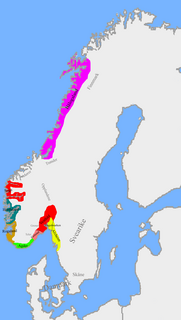 W
WThe petty kingdoms of Norway were the entities from which the later Kingdom of Norway was founded. Before the unification of Norway in 872 and during the period of fragmentation after King Harald Fairhair's death Norway was divided in several small kingdoms. Some could have been as small as a cluster of villages and others comprised several of today's counties.
 W
WThe Picts were a group of peoples who lived in what is now northern and eastern Scotland during Late Antiquity and the Early Middle Ages. Where they lived and what their culture was like can be inferred from early medieval texts and Pictish stones. Their Latin name, Picti, appears in written records from the 3rd to the 10th century. Early medieval sources report the existence of a distinct Pictish language, which today is believed to have been an Insular Celtic language, closely related to the Brittonic spoken by the Britons who lived to the south.
 W
WThe Kingdom of the Rugii or Rugiland was established by the Germanic Rugii in present-day Austria in the 5th century.
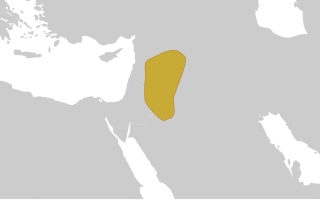 W
WThe Salīḥids, also known simply as Salīḥ or by their royal house, the Zokomids were the dominant Arab foederati of the Byzantine Empire in the 5th century. They succeeded the Tanukhids, who were dominant in the 4th century, and were in turn defeated and replaced by the Ghassanids in the early 6th century.
 W
WSamo's Empire is the historiographical name for the West Slavic tribal union established by King ("Rex") Samo, which existed between 631 and 658 in Central Europe. The centre of the union was most likely in Moravia and Nitravia (Nitra), additionally the union included Czech tribes, Sorbian tribes and other West Slavic tribes along the river Danube. The polity has been called the first Slavic state.
 W
WThe Sciri, or Scirians, were a Germanic people. They are believed to have spoken an East Germanic language. Their name probably means "the pure ones".
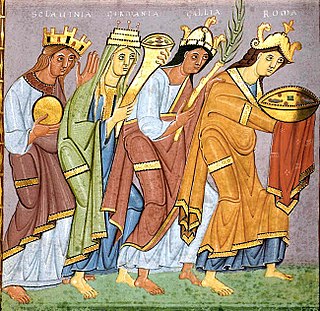 W
WThe Sclaveni or Sklabenoi were early Slavic tribes that raided, invaded and settled the Balkans in the Early Middle Ages and eventually became known as the ethnogenesis of the South Slavs. They were mentioned by early Byzantine chroniclers as barbarians having appeared at the Byzantine borders along with the Antes, another Slavic group. The Sclaveni were differentiated from the Antes and Wends ; however, they were described as kin. Eventually, most South Slavic tribes accepted Byzantine suzerainty, and came under Byzantine cultural influence. The term was widely used as general catch-all term until the emergence of separate tribal names by the 10th century.
 W
WSub-Roman Britain is the period of late antiquity on the island of Great Britain, covering the end of Roman rule in the late 4th and early 5th centuries, and its aftermath into the 6th century. The term "sub-Roman" was originally used to describe archaeological remains such as potsherds found in sites of the 5th and 6th centuries, and hinted at the decay of locally made wares from a previous higher standard that had existed under the Roman Empire. It is now more often used to denote this period of history instead. The term Post-Roman Britain is also used, mainly in non-archaeological contexts.
 W
WThe Tanûkhids or Tanukh were a confederation of Arab tribes, sometimes characterized as Saracens. They first rose to prominence in northern Arabia and south of Syria in the 3rd century BC. Both Lakhmid and Tanukhid inscriptions have been found at Umm el-Jimal in Jordan and Namara in Syria. The ancient Tanukhi tribal confederation was largely taken over by several branches of the large Azd and Quda'a tribe. Their main base during the time of their most famous ruler, Queen Mavia, was in Aleppo.
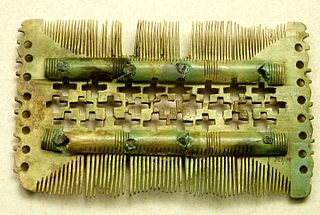 W
WThe Thuringii (Thervingi), Toringi or Teuriochaimai, were an early Germanic people that appeared during the late Migration Period in the Harz Mountains of central Germania, a region still known today as Thuringia. It became a kingdom, which came into conflict with the Merovingian Franks, and it later came under their influence and Frankish control. The name is still used for one of modern Germany's federal states (Bundesländer).
 W
WThe Vandal Kingdom or Kingdom of the Vandals and Alans was established by the Germanic Vandal people under Gaiseric. It ruled in North Africa and the Mediterranean from 435 to 534 CE.
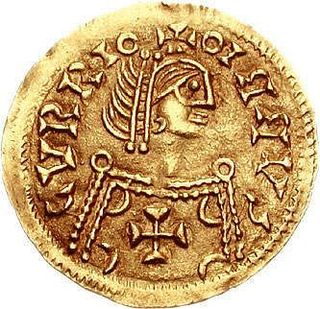 W
WThe Visigothic Kingdom, officially the Kingdom of the Goths, was a kingdom that occupied what is now southwestern France and the Iberian Peninsula from the 5th to the 8th centuries. One of the Germanic successor states to the Western Roman Empire, it was originally created by the settlement of the Visigoths under King Wallia in the province of Gallia Aquitania in southwest Gaul by the Roman government and then extended by conquest over all of Hispania. The Kingdom maintained independence from the Eastern Roman or Byzantine Empire, whose attempts to re-establish Roman authority in Hispania were only partially successful and short-lived.
 W
WVolga Bulgaria or Volga–Kama Bulghar, was a historic Bulgar state that existed between the 7th and 13th centuries around the confluence of the Volga and Kama River, in what is now European Russia. Volga Bulgaria was a multi-ethnic state with large numbers of Turkic Bulgars, a variety of Finnic and Ugric peoples, and many East Slavs. The very strategic position of Volga Bulgaria allowed it to create a monopoly between the trade of Arabs, Norse and Avars.